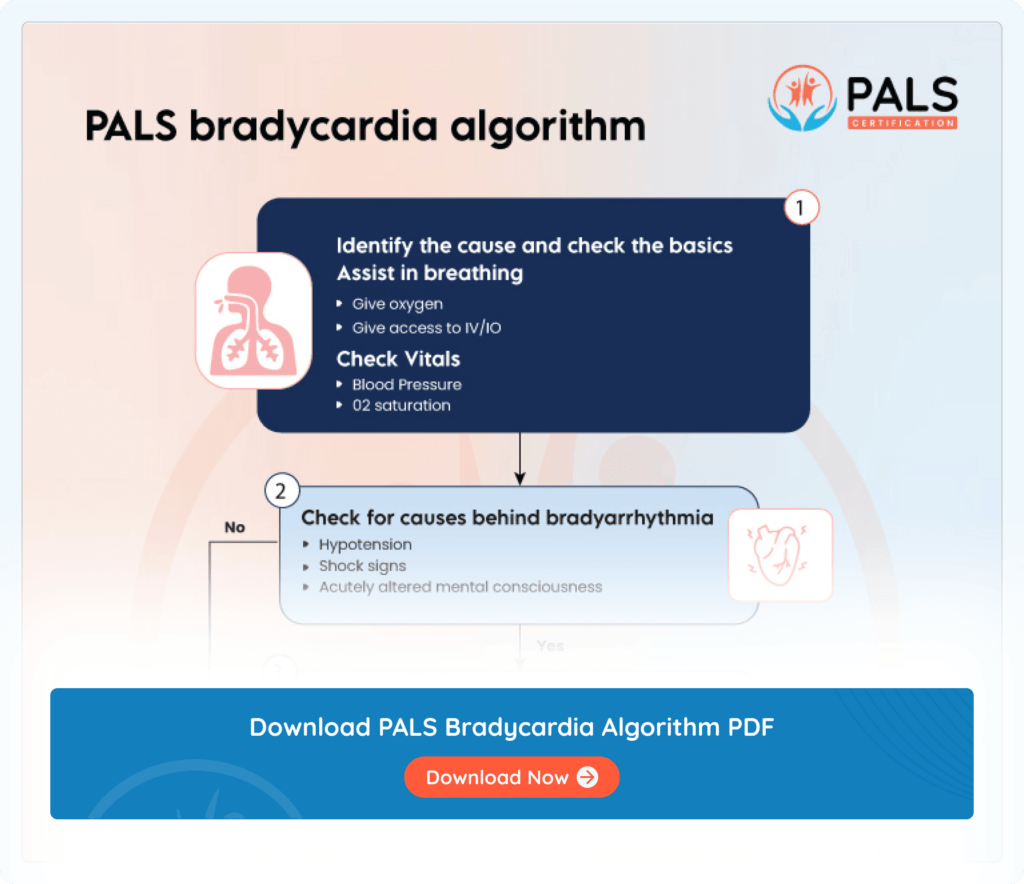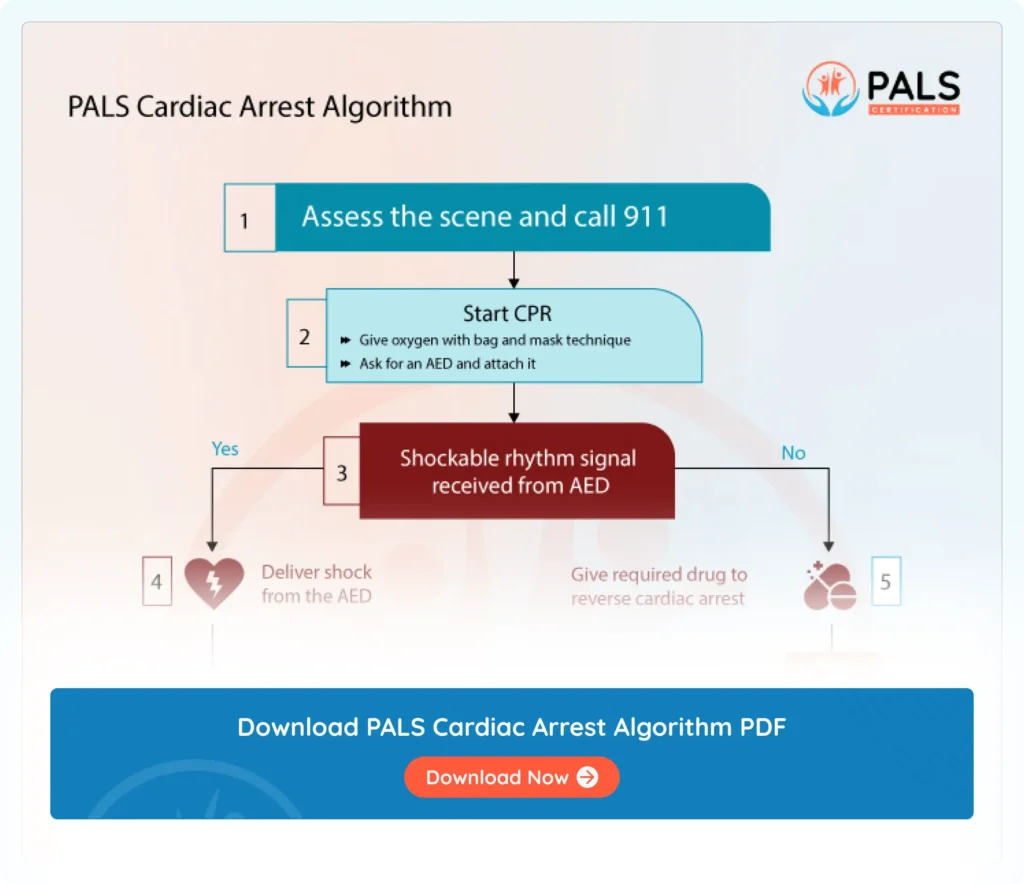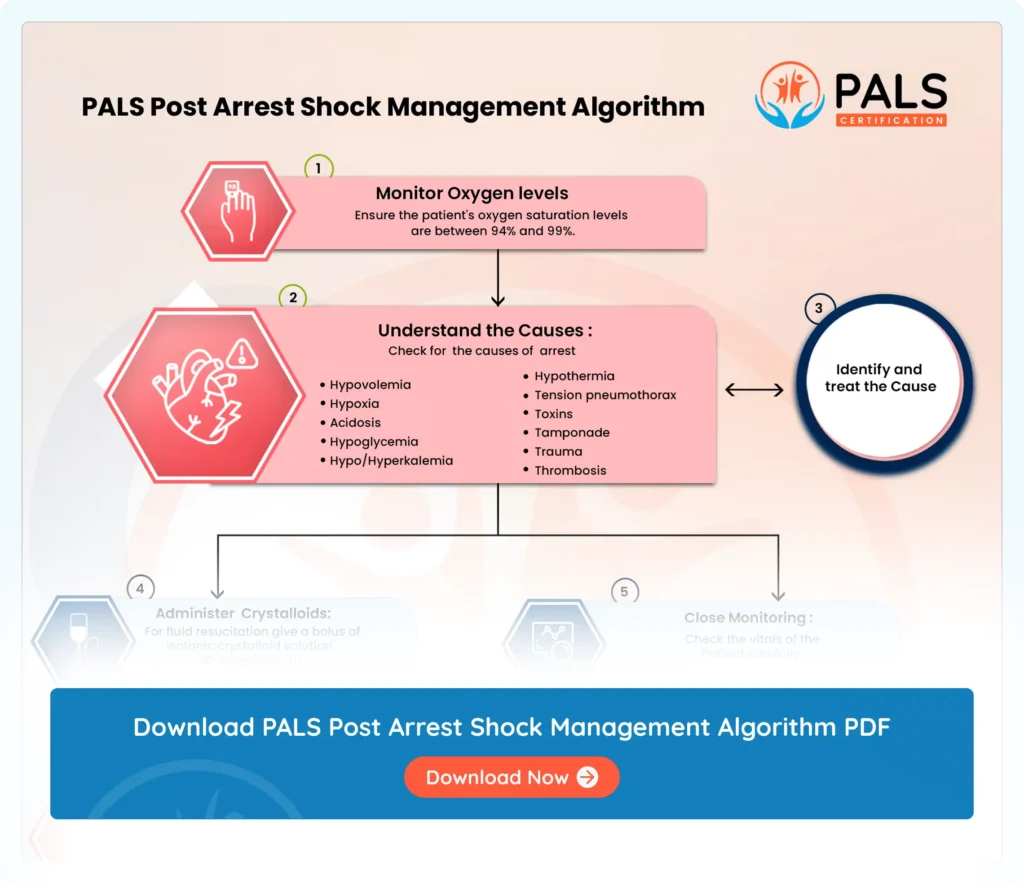- 4.0 - 8.0 CE Credit Hours
- For Pediatric Responders
- Includes Videos, Megacode Scenarios, Practice Tests & More
- FREE BLS Included
The PALS Wide QRS Tachycardia Algorithm addresses critical pediatric cardiac conditions. It provides a systematic approach for healthcare providers to manage pediatric emergencies and ensure adequate perfusion in pediatric patients.
PALS (Pediatric Advanced Life Support) wide QRS tachycardia perfusion algorithm provides the ultimate guideline for effective intervention that stands critical in pediatric resuscitation situations.
Particularly when a child is suffering from rapid heart rate with a widened QRS complex detected in an ECG (Electrocardiogram). This condition is often presented with adequate perfusion.

Online PALS certification and recertification
- Compliant with ECC and OSHA guidelines
- Nationally accepted course
- Available anytime, anywhere
- Earn CE credit hours
$199.00

Sequential Explanation of the Flow chart
- For wide QRS complex tachycardia: QRS duration >120 ms
- Check regularity & irregularity
- Determine if QRS is identical to SR(Sinus Rhythm)
- If Yes
- Consider SNT (Supraventricular Tachycardia) and BBB (Bundle Branch Block)
- If No
- Consider Atrial Fibrillation (Atrial flutter/AT with variable conduction)
- Discover other underlying causes
- Can include electrolyte imbalance, structural heart disease, medication toxicity)
- Attempt Vagal Maneuver
- Apply firm pressure on the child’s eye
- Massage the carotid sinus
- Put patient on Adenosine
- 0.1mg/kg rapid IV-6mg (1st Dose)
- 0.2mg/kg -12mg (2nd Dose)
- AED/Cardioversion
- 0.5-1 joule/kg
- 2 joules/kg (2nd Dose)
Key Findings of PALS Wide QRS Tachycardia Adequate Perfusion Algorithm
- Assessment of Clinical Condition: Evaluate for a palpable pulse and signs of adequate perfusion.
- Identify Underlying Cause: Determine potential causes like electrolyte imbalances or structural heart disease.
- Attempt Vagal Maneuvers: Perform maneuvers if safe, such as carotid sinus massage or Valsalva maneuver.
- Consider Adenosine: Administer adenosine if wide QRS tachycardia is regular and vagal maneuvers fail.
- Monitor for Stability: Consult pediatric cardiology if the child remains stable with adequate perfusion.
- Continuous Monitoring: Continuously monitor vital signs and clinical status, prepared for advanced interventions if necessary.
Available Courses
PALS Certification and Recertification Online
ACLS Certification and Recertification Online
- 4.0 - 8.0 CE Credit Hours
- For Healthcare Professionals
- Includes Videos, Megacode Scenarios, Practice Tests & More
- FREE BLS Included
$119.00 $169.00
Get CertificateBLS Certification and Recertification Online
- 6.0 CE Credit Hours
- For Medical Fields
- Includes CPR & First Aid Bag-Mask Techniques
$36.95 $39.90
Get CertificateSources
- Interpreting ECG in Pediatric Patients https://www.ncbi.nlm.nih.gov/pmc/articles/PMC7808076/
- Wide Complex Tachycardias: Understanding this Complex Condition: Part 1 – Epidemiology and Electrophysiology https://www.ncbi.nlm.nih.gov/pmc/articles/PMC2672229/
- Sinus Rhythm https://www.sciencedirect.com/topics/nursing-and-health-professions/sinus-rhythm
- Differential Diagnosis of Tachycardia https://www.ncbi.nlm.nih.gov/pmc/articles/PMC3110901/
- Peripheral Pulse https://www.ncbi.nlm.nih.gov/books/NBK542175/
- Comparison of treatment of supraventricular tachycardia by Valsalva maneuver and carotid sinus massage https://pubmed.ncbi.nlm.nih.gov/9437338/
- ACLS and Adenosine https://acls-algorithms.com/acls-drugs/acls-and-adenosine/
All PALS Algorithms

PALS Bradycardia Algorithm
The PALS Bradycardia Algorithm is a systematic approach for managing slow heart rates in pediatric patients.

PALS Cardiac Arrest Algorithm
The PALS (Pediatric Advanced Life Support) algorithm is a standardized set of guidelines used in emergency medicine to manage pediatric cardiac arrest situations.

PALS Post Arrest Shock Management Algorithm
PALS Post Arrest Shock Management Algorithm outlines steps after ROSC for pediatric patients emphasizing critical interventions for stabilization


